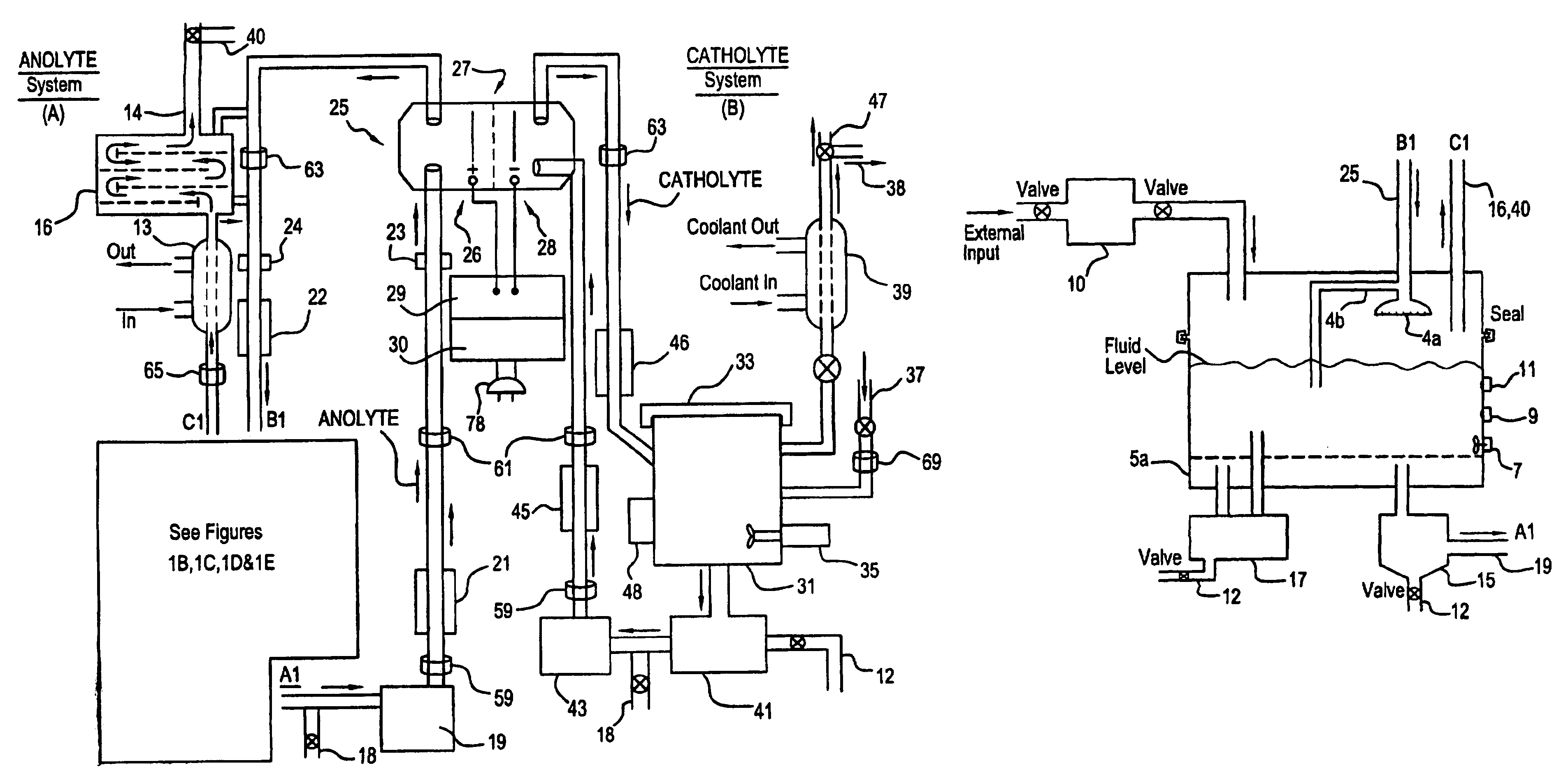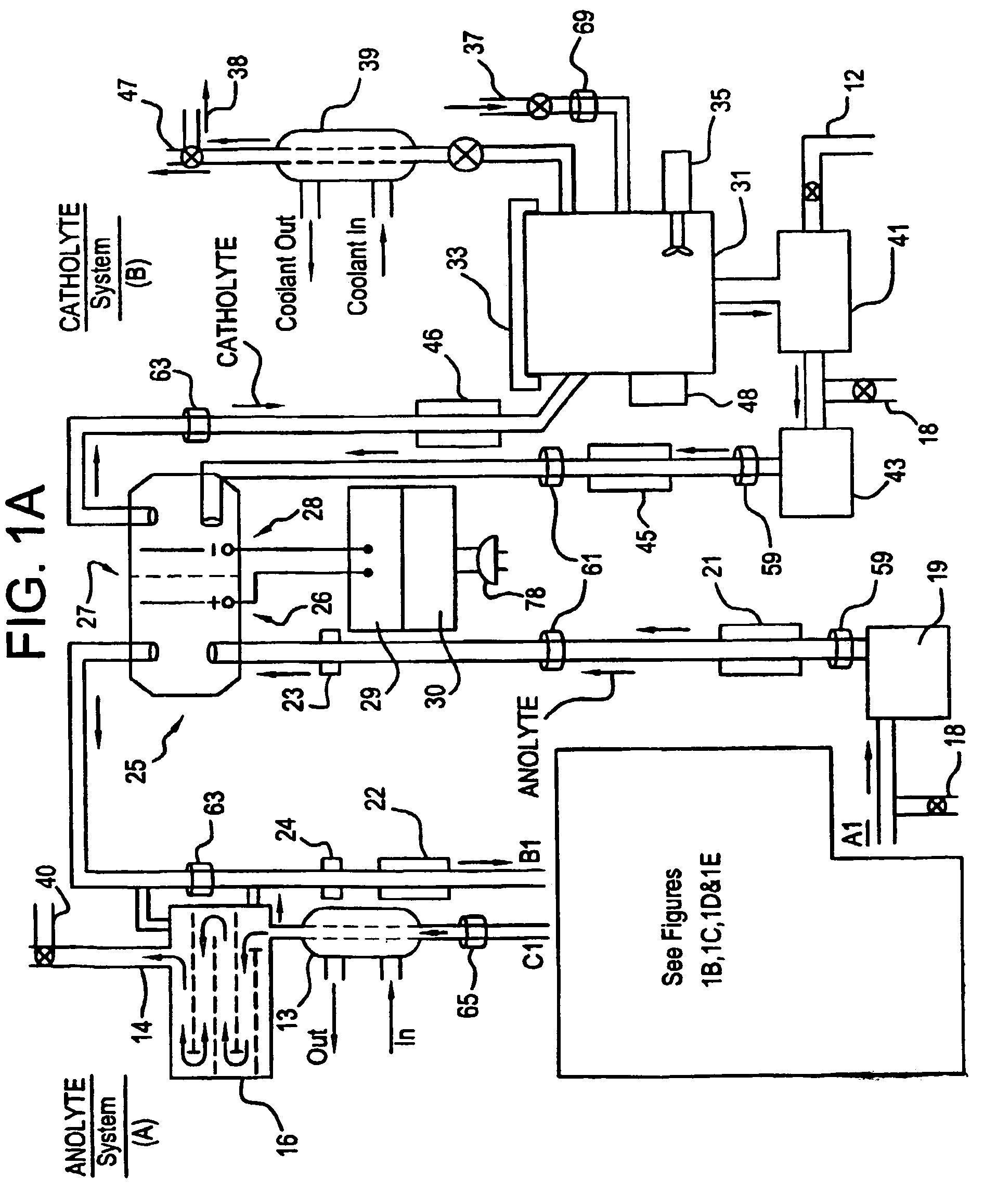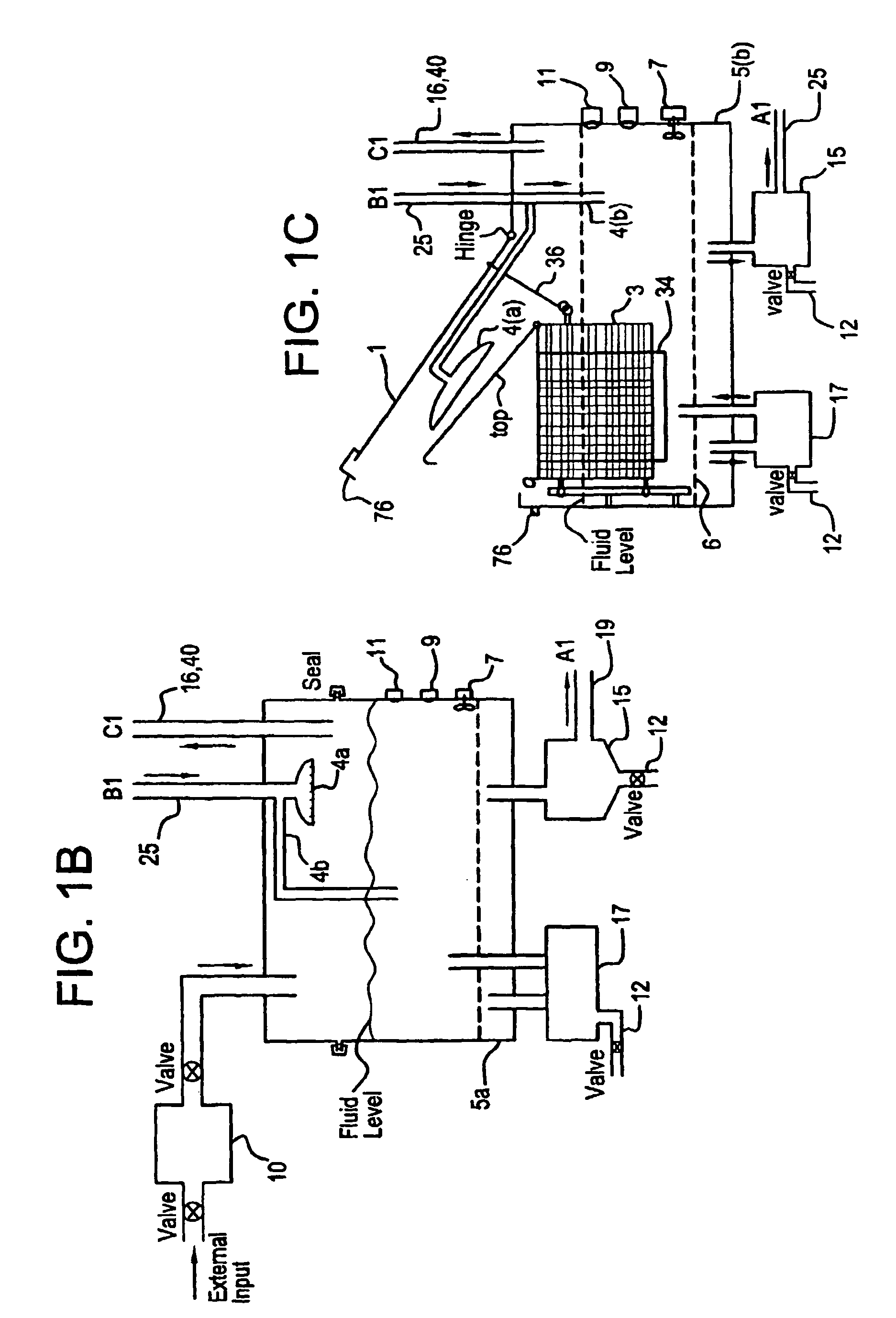Mediated electrochemical oxidation process used as a hydrogen fuel generator
a hydrogen fuel generator and electrochemical oxidation technology, applied in fuel cells, electrochemical methods, water/sewage treatment, etc., can solve the problems of reducing the overall efficiency of the fuel cell, reducing the cost of raw fuel, and complicated system design, etc., and achieve the effect of increasing the efficiency of the meo process
- Summary
- Abstract
- Description
- Claims
- Application Information
AI Technical Summary
Benefits of technology
Problems solved by technology
Method used
Image
Examples
examples
[0147]The following examples illustrate the application of the process and the apparatus.
Example (1)
Destruction of Food Waste
[0148]The environmental effects of food waste disposal methods are a concern, particularly with respect to surface water and ground water quality and to air quality as affected by odors and gaseous emissions from large-scale food production operations.
[0149]Samples of various types of food waste was collected for test purposes. The samples included cooked and uncooked meat and bone. The samples tested in the MEO apparatus were from poultry and cattle food processing. The MEO apparatus was operated at 50° C. for each samples tested. The food waste was totally destroyed producing water and CO2. There was a small amount of inorganic salt remaining in the settling tank of the MEO apparatus after completion of the destruction.
[0150]Food waste is a good candidate for the waste to be used to generate hydrogen fuel and at the same time dispose of the undesirable food ...
example
(8)
System By-Products are Safe
[0158]The system flexibility provides for the introduction of more then one mediator ion resulting in marked improvement in the efficiency of the electrolyte. Furthermore, the wide choice of mediators listed in Table I or available as POMs, and electrolytes in this patent, desensitizes the system to the formation of participates in solution (i.e. allows increased ease in preventing formation of unstable oxy compounds).
[0159]While the invention has been described with reference to specific embodiments, modifications and variations of the invention may be constructed without departing from the scope of the invention, which is defined in the following characteristics and features.
[0160]The invention provides the following new characteristics and features:[0161]1. A process for the use the mediated electrochemical oxidation (MEO) on biological and organic waste materials to produce hydrogen and oxygen comprising disposing an electrolyte in an electrochemica...
PUM
| Property | Measurement | Unit |
|---|---|---|
| temperature | aaaaa | aaaaa |
| boiling temperature | aaaaa | aaaaa |
| diameter | aaaaa | aaaaa |
Abstract
Description
Claims
Application Information
 Login to View More
Login to View More - R&D
- Intellectual Property
- Life Sciences
- Materials
- Tech Scout
- Unparalleled Data Quality
- Higher Quality Content
- 60% Fewer Hallucinations
Browse by: Latest US Patents, China's latest patents, Technical Efficacy Thesaurus, Application Domain, Technology Topic, Popular Technical Reports.
© 2025 PatSnap. All rights reserved.Legal|Privacy policy|Modern Slavery Act Transparency Statement|Sitemap|About US| Contact US: help@patsnap.com



